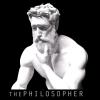How to make manually posing easier?
 PA_ThePhilosopher
Posts: 1,039
PA_ThePhilosopher
Posts: 1,039
Hey guys,
New Daz user here. Coming from iClone, I have gotten used to the ease with which iClone is able to *manually* pose a character. And so I was wondering if there are any tips or tricks that you do to make manually posing easier. The posing in Daz seems a little more... sensitive. Any slight motion in one part can quick distort the entire body.
I am wondering if the features in iClone are also present in Daz, such as being able to move just parts isolated from the whole body.This seems to be key in being able to have full control when posing. Also, I am having trouble finding the mirroring function as well.
Thank you for any help you can provide,
Davide
Post edited by PA_ThePhilosopher on


Comments
That's why one of the most popular store items and free items are pose packs...
myabe you can try toolsetting tab >active pose, to stick each node movements,
it is more reliable just freeze pinned nodes movements. have you tried already?
but to translate node with active poze gizmo, you may feel it is not so good ^^;
you can active poze gizmo on, then move along one axis,, but it not along one axis.
aproximately movements.
anyway,, these tools are all for daz studio pozing.
(there are power poze, or apply and mix preset with ctrl key apply, then mix pozing etc)
then I always serch aprication which can poze daz figure ease , and easy re-import.
I tried iclone, and Ikinema, yes they work, but the improt and export process
not much to make one poze for daz studio render.
about symmetly, I copied my reply
posing tab area, R-click >Symmetry
or
you may find small square area with bar on each pane contena corner,
it can call option menu of current tab(pane)) then use Symmetry.
I think default short cut is (Shift + Y)
Hey, welcome to Daz! :) Now, I haven't used iClone so I'm not sure how much this'll help, but I'll give it a shot.
In the previous post, I believe Active Pose was mentioned. This helps tremendously with tilting the body or moving limbs, to keep things from snapping where you don't want them. Activate the tool - the icon looks like a bone with a cursor next to it - then use it to drag body parts instead of the normal method. To further refine what you do and don't want moving, while Active Pose is being used, you can select a body part and hit Space to pin that part so that it won't translate or rotate; it won't move at all, no matter what else moves.
I also found that the dials are surprisingly useful at times. If you're having trouble getting something to bend the way you expect it to, click on the part you're wanting to move, then bring up the Posing panel (I believe it's a sidebar tab by default). You can then use the Rotation sliders to rotate the part on any axis, and these sliders seem less sensitive than directly dragging parts or even using the rotation interface in the viewport, and for added precision, you can tap + or - to move in small increments.
Finally, a tip I've found useful, especially in conjunction with Active Pose pinning: Sometimes, you get more control by turning off rotation limits. With the normal Universal Tool active, click on your figure. You should see a little icon near the figure that looks like a body with a curving arrow on either side of it. Click on this icon, then click "Limits Off (Rotation)".
Often, what's happening when parts of the body move in ways you don't expect is that the figure's rotation limits are moving other parts to compensate for what you're trying to do, to keep the pose "realistic". It's a useful feature, but not always necessary and sometimes a hindrance, as you seem to be experiencing! If you have nearby parts pinned in Active Pose mode, rotation limits will often cause the limb you're moving to twist and jump in strange ways if you try to make drastic moves with it.
Turning rotation limits off will alleviate both problems. Just watch and make sure you're not overstretching the character so it starts to look unrealistic! :) If you ever find you've just screwed the thing up beyond repair by posing with limits off, turning them back on will snap everything back to its natural limits, as close as possible to the pose you've created, or you can simply zero the figure pose and start over.
I hope this helps. Good luck!
Also, when using active pose, it is often useful to change your layout to two non-perspective views like Top and Front.
Thanks for taking the time to respond to the OP- I've been using Daz for a while (tweaking existing poses) and didn't know about how useful the tool you describe is. Thanks so much for sharing the knowledge! With this I'll feel more confident to pose from scratch.